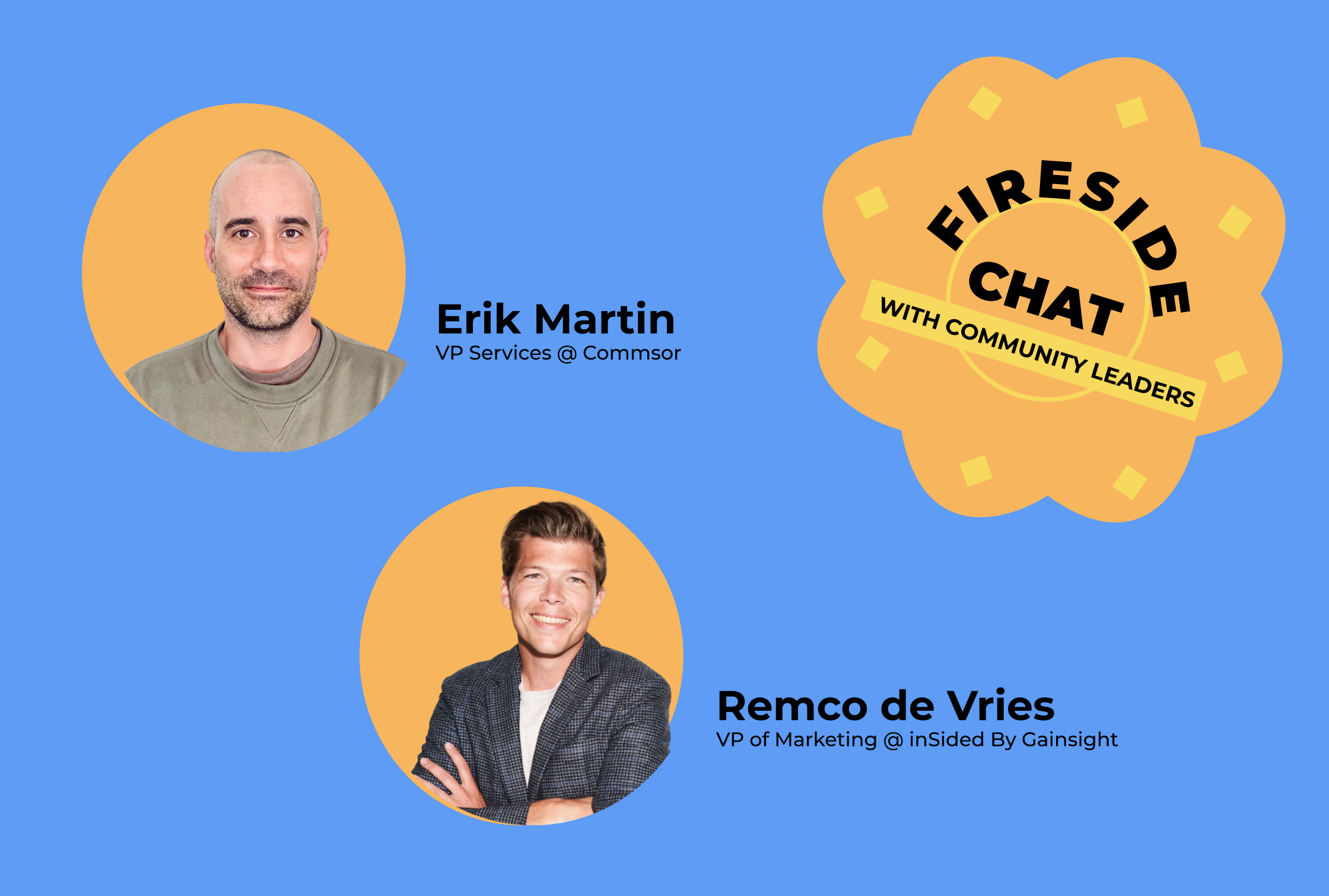In a recent webinar with Commsor VP of Services, Erik Martin and inSided VP of Marketing, Remco de Vries, we discussed some important factors you want to consider when creating your community strategy. Here’s Erik’s biggest takeaways on how to approach content creation, finding advocates, internal support, and KPIs.
Want to see the webinar in full? Click here to watch it on-demand.
Takeaway 1: View content as a genre
Content is not one size fits all. By segmenting your content around niche topics or specific categories, you’re creating boundaries so your members understand how to participate. This is how Erik approaches content strategy. “By narrowing in on the topic, it’s then easier to post.” he says. “You want to make it obvious so people know what to do.” Some of his go-to, low-friction examples are pets and big wins. Because who doesn’t want to post a cute pic of their dog?
Takeaway 2: Nominate members to post for a finite amount of time
We’re all aware of how valuable your super users can be in a community. But sometimes it may be more challenging to find those individuals. Your goal is to search for those who are looking to find their voice. You may discover some community members have a lot to say but Linkedin is too daunting for them to share their thoughts. However, a safe space like a community is a great entry point for them to test things out and see what content to curate.
Erik’s tip is to nominate these individuals to post in your community for a period of time. “Deputize community members early on,” he says. “Make the ask clear. It can be 10 days or five days.”
Giving these individuals a time frame for how long you’re asking them to post within the community will help with expectations on their end and make it easier for them to accept your offer.
Takeaway 3: Most of the company should be involved
Erik suggests once the beta version of your community is launched, everyone should support in those first critical weeks. At the very minimum, Marketing, Support, and at least one executive should have active participation, whether it’s welcoming new members, engaging with content, or introducing themselves. And if you run into pushback or get questions like “why do I need to be involved?” Remind these individuals that regardless what bucket Community falls into, it benefits the entire company.
Takeaway 4: One growth KPI and one retention KPI
If you’re looking to see how healthy your community is, you should ask yourself these two questions:
- Is my community growing?
- Are members returning?
For the first bullet, referrals are a great metric to track. Erik’s pro tip is to not solely look at NPS but actual referrals. It can be as easy as sending a simple survey asking members ‘have you talked about the community within the last 30 days?’ This will help you gauge word-of-mouth activity and organic growth.
For the second bullet, you want to keep track of your active users. Whether it is monthly active users or daily active users is up to you. But the goal is to make sure people are coming back.
Takeaway 5: Community can help you be more efficient as a business
Community touches all parts of the business and can help each team with efficiencies. For Support, it could be crowdsourcing an answer from peers or directing a question to the community. For Marketing, it could be word of mouth and inviting people within their networks to join vs. wasting money on paid advertising.
But Erik says the biggest role Community plays in making companies more efficient is by making better business decisions through listening. “Your community can tell you where to go and where not to. If you can listen both passively for knowledge capture and actively by asking community members as a whole or in small groups and get their feedback before you invest too many resources in a direction that isn’t going to be fruitful, that can be where communities can save businesses a lot of money.”
Want more community takeaways and tips? Sign up for our monthly digest to stay in the loop with new insights on Customer Success and online communities.


